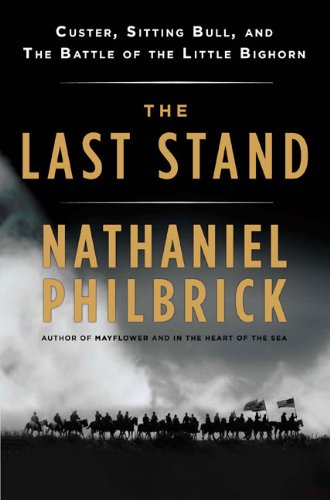"The Last Stand" by Nathaniel Philbrick
George Armstrong Custer keeps following me around. I’m not sure how he does this, since he’s been dead for about 135 years. But it sure seems like he haunts my life.
Less than 50-years after the Battle of the Little Bighorn, my father was born in the same part of Montana as that famous battle. When I was growing up I came across a biography of Custer and, with my father’s encouragement, used it for a book report in high school. In my mid-20’s I visited the battle ground with my father and my brother. In my mid-30’s I visited it again with my wife and kids. In the midst of all this I was living a good chunk of my life in Pleasanton, named after the Civil War general who considered Custer as a son.
Then I saw that Nathaniel Philbrick, a historical author that I really enjoy, had written “The Last Stand.” I just had to read it. And I’m glad I did.
Custer is an enigma. He’s not the swashbuckling hero that Western myth would have you believe, but he’s also not the culture destroying Indian killer that others would have us believe. He’s a bit of both, actually. And the tension between the two is uneasy. Biographers must relish the idea of writing about such an interesting icon of American history as Custer.
There is a lot of historical detail that was painstakingly researched in this book. And though Philbrick doesn’t delve into the archaeological evidence, that information informs the story that he tells (archaeological evidence is invaluable in this story because none of the soldiers survived the battle and few of the Indian stories were written down in 1876). It can be a confusing and bewildering story at times, but that’s to be expected of any war tale that involves hundreds of soldiers moving about a battle field. I really enjoyed how Philbrick weaves both the soldiers and the Indians versions of the battle into the same storyline. Even more impressive, he does this while paying respects to both perspectives.
A conclusion I came to after reading the books is that our military is much more disciplined today. Philbrick paints a grim picture of glory seeking officers who were disrespectful of each other and their superiors, and much of that fed the disaster that became known as the Battle of the Little Bighorn. It’s a balanced portrayal because Philbrick also commends the soldiers for their bravery (especially the warriors for the Indians), but the arrogance of the army officers is what struck me the most. I’m thankful our military today is more professional and more disciplined than what it was in 1876.
If you love American history or Western history, this is a must read. If you are curious about a guy like Custer, you’ll enjoy the book as well.

